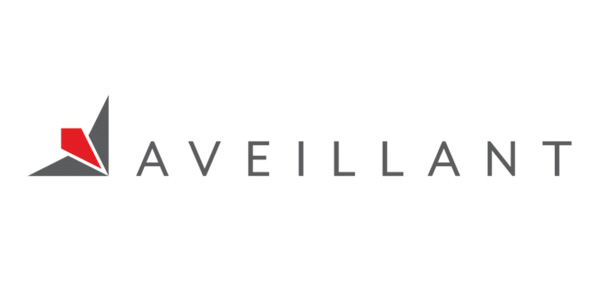Overcoming aviation objections to wind turbines
The high-tech company Aveillant uses Esri’s ArcGIS platform to identify the optimum sites for its ground-breaking radar masts that improve safety near airports. By replacing manual research tasks, GIS enables employees to work more efficiently and communicate more effectively with third parties including wind farm developers and planning authorities.
The Customer
Aveillant is a high technology company leading the way in delivering advanced 3D surveillance radar systems. Its Holographic Radar™ technology is applied to one of the most pressing concerns in the modern aviation industry today.
ArcGIS enables Aveillant to identify the strongest business opportunities and focus its energies on the prospects that are most likely to lead to sales
Employees can perform complex analysis and identify the most viable and cost effective radar sites
The company uses ArcGIS to demonstrate the value of its radars to wind farm developers and help them overcome planning obstacles
The Challenge
The air traffic control radars commonly used at airports today only provide a two-dimensional picture of airspace, making it hard for air traffic controllers to differentiate between a rotating blade close to the ground and a moving aircraft at 30,000 feet. Consequently, planning applications for wind farms near flight paths are often turned down on the grounds of radar interference, when the sites would otherwise be ideal for the generation of low-carbon energy.
Aveillant uniquely addresses this problem. Based on flat panel arrays, the company’s Holographic Radar technology identifies objects and intelligently removes unnecessary “clutter” from the air traffic control picture. Air traffic controllers can therefore get a clean view of their air traffic, enabling them to better manage their airspace and general safety around the airport. The company’s advanced radar systems are typically used by wind farm developers to help them overcome the problems that turbines cause and enable aviation objections to be removed.
With over 3,500 planning applications in progress for wind farms across the UK, Aveillant needed to be able to identify precisely those developers that would benefit most from its 3D radar system. It then needed to identify the best locations to site its radars to give the maximum amount of coverage for clusters of prospective new wind turbines and nearby airports, while taking into account a range of different factors from accessibility and cost to environmental sensitivities. The company had a lot of data that it needed to make sense of, but it was all in separate locations in written formats.
ArcGIS has applications in absolutely every part of the company
Ben Tilley – GIS Business Support Analyst at Aveillant
The Solution
The solution to Aveillant’s challenge came in the form of geographic information system (GIS) technology from Esri UK.
The company now uses Esri’s ArcGIS Desktop to plot the locations of traditional radars alongside planning applications for new wind farms. This enables it to immediately identify which proposed new developments could potentially cause radar interference. It then uses the GIS to analyse data, such as the size of the proposed development and the status of the planning application, to identify the strongest potential business opportunities.
Next, Aveillant uses ArcGIS tools, such as Esri’s Spatial Analyst extension, to conduct business and financial modelling to help it identify the optimum site for its radars to benefit large developments or groups of wind farms in a similar area. It can take into account terrain, roads, rivers and power sources to find the site that will deliver best coverage for least cost.
Then, when Aveillant is involved in negotiations and conversations with wind farm developers, airports and planning authorities, GIS is used again to produce reports clarifying the coverage of Aveillant’s 3D radar system. In coming months, the company plans to use Esri’s ArcGIS Online solution to give third parties direct access to its interactive maps. Ben Tilley, GIS business support analyst at Aveillant says, “ArcGIS has applications in absolutely every part of the company.”
The effect wind turbines have on aviation radars is holding up billions of pounds worth of investment in renewable energy. GIS helps us to deliver a solution, address airports’ concerns and encourage greater acceptance of wind turbines for the benefit of the environment
John Allan – Commercial Director at Aveillant
The Benefits
The use of ArcGIS enables Aveillant to focus its attention on those wind farm developments that are most likely to benefit from its radar technology. It can therefore increase its sales success and install more of its radar systems more quickly. “GIS is now a key part of all our prospecting, bids and investment decisions,” says John Allan, commercial director at Aveillant. “It is helping us to build the business.”
GIS has replaced many manual research tasks, enabling employees to work much more efficiently. At the same time, the business now has much better information at its disposal, which enables it to find the most cost-effective sites for its radars very quickly and easily. “We can potentially identify an exact site, within a few meters, before even leaving the office,” says Tilley.
Most importantly, GIS has become an invaluable tool for sharing information with developers, airports and planning authorities and helping these third parties understand the benefits of Aveillant’s Holographic Radar. GIS plays a particularly critical role in helping to reassure airports that proposed wind farms can go ahead, as they will have better radar information to help them manage their airspace and ensure safety around the airport. “GIS enables us to present an accurate dynamic map of how we can solve the radar interference problem,” Tilley says. “It gives everyone confidence that our solution brings them benefits.”
Aveillant is a relatively young company with big ambitions. In the years ahead, it hopes its Holographic Radar systems will be the catalyst that speeds up the spread of renewable energy sources across the UK. “The effect wind turbines have on aviation radars is holding up billions of pounds worth of investment in renewable energy,” comments Allan. “GIS helps us to deliver a solution, address airports’ concerns and encourage greater acceptance of wind turbines for the benefit of the environment.”



